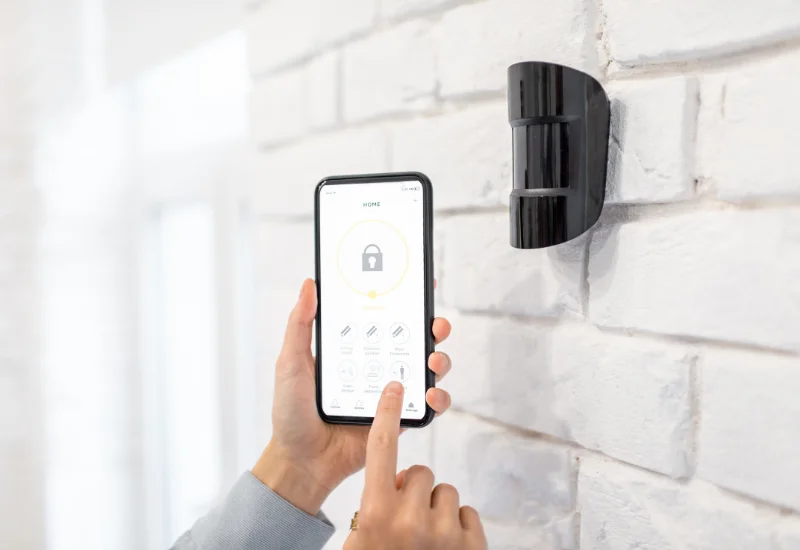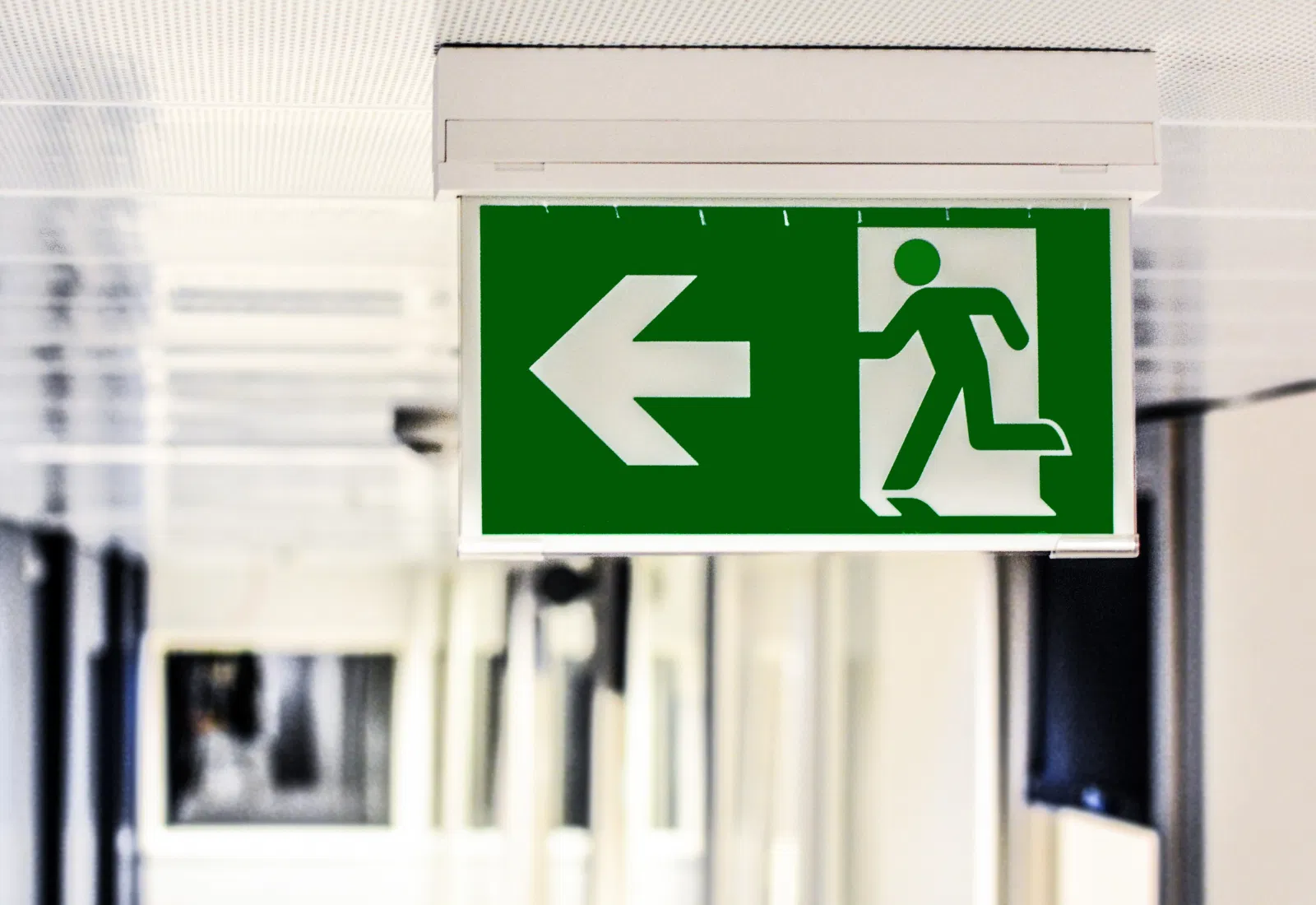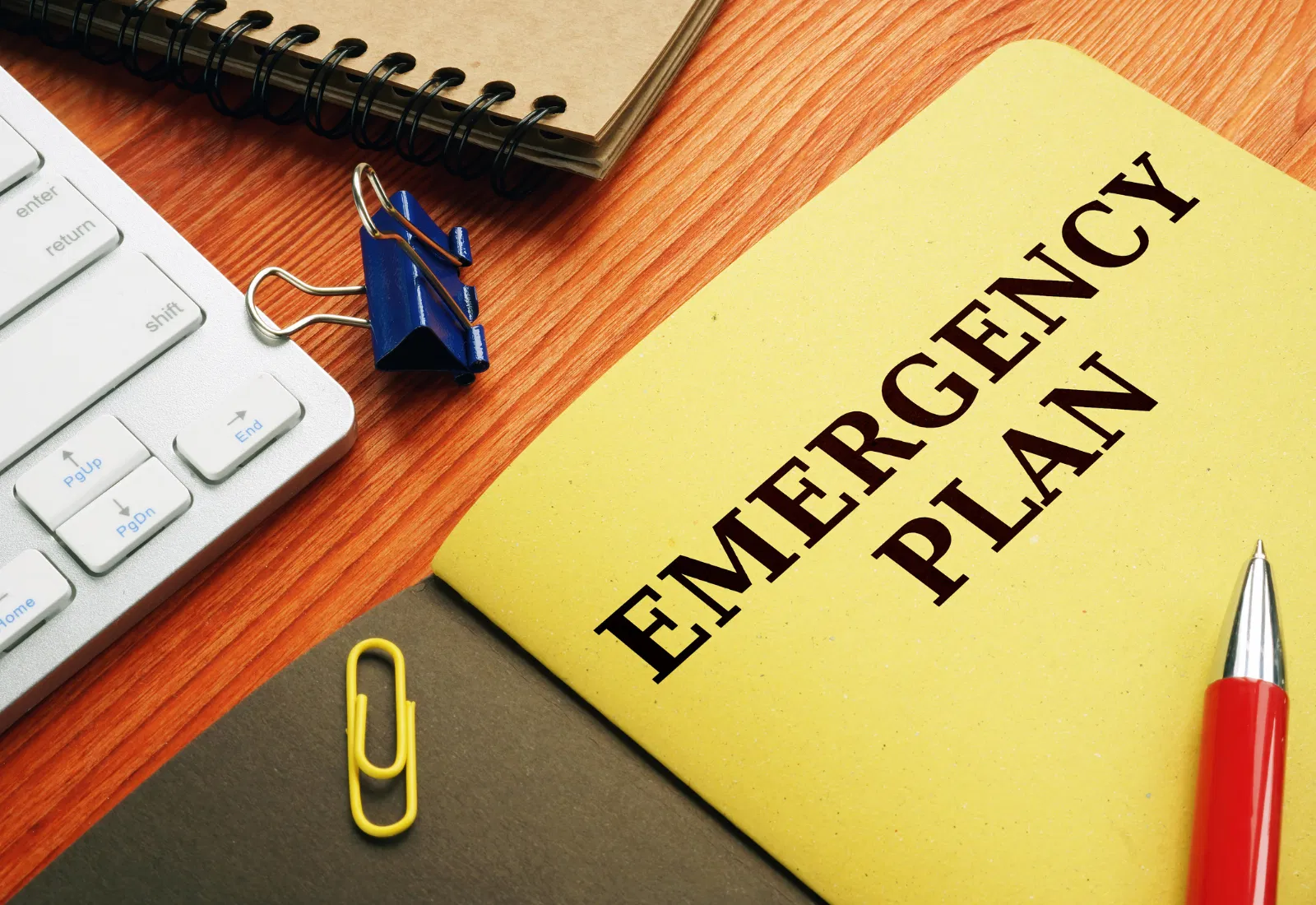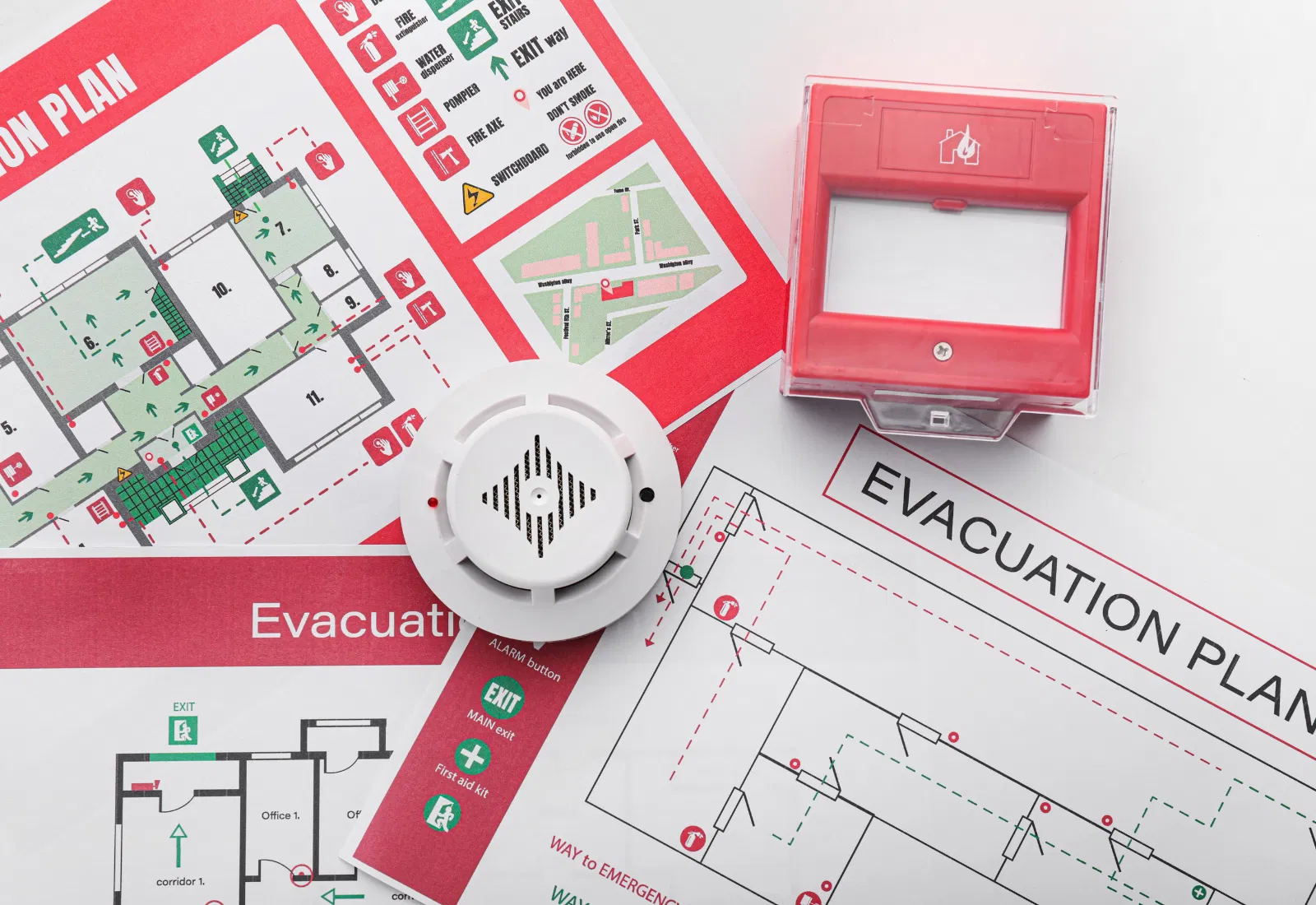
Dec 04, 2025
This guide explains why a digital visitor registration system is essential in emergency situations. With practical tips and clear examples, you can create a solid emergency plan right away.
Written by Jill - Written: July 26, 2025

No one likes to dwell on fire, evacuation, or any other workplace emergency. Yet, proper preparation is essential for preventing minor issues from escalating into major problems. Proper crisis planning is therefore indispensable for any organization.
In corporate security, visitor management is often overlooked. However, efficient visitor registration is an asset that increases security and provides an overview, especially during emergency situations. With a modern visitor management system, you always know exactly who is in the building and can immediately take appropriate measures in case of an incident.
In this guide, we explain why emergency planning is essential and detail the important role of visitor management. We provide practical tips and inspiring real-life examples. You will be well prepared for any emergency situation and able to optimally protect your visitors and employees.
A visitor management system or visitor registration system is a digital platform that allows organizations to easily and efficiently register, manage and track visitors. The days of handwritten visitor lists or logbooks at the front desk are over: these are often cluttered and offer little security. With a VMS, visitors can quickly log in via a tablet or smartphone. This not only increases ease of use, but also provides greater security and a better overview of who is in the building.
Visitors can check themselves in at a self-service kiosk or on a tablet. They can fill in their details, take a picture, print a badge, and sign any required documents, such as a non-disclosure agreement (NDA) or security instructions. With a modern system such as Vizito, visitors can pre-register, which requires them to merely scan a code upon arrival.
A notification is automatically sent to the host. At the end of the visit, the guest simply checks out again.
All visitor data is securely stored in the cloud. This provides a real-time overview of everyone in the building.

Today, many companies are choosing digital visitor management systems because they offer many advantages over traditional, paper-based visitor registration systems:
| Digital visitor management | Paper logbook |
|---|---|
| Efficient Quick and error-free registration of visitors |
Inefficient Registration is cumbersome and mistakes are easily made |
| Safe Always an up-to-date overview of who is present, data securely stored in the cloud |
Unsafe No overview of who is in the building, data not protected |
| Professional Modern, welcoming impression upon entry |
Sloppy Old-fashioned, sloppy impression |
| Privacy-safe Easy to comply with privacy laws |
Not privacy-safe Data viewable by anyone, not GDPR-proof |
| Organized Easy to generate reports and statements |
Cluttered Generating reports is not possible |
When companies consider a digital visitor management system, they primarily do so for the convenience it provides in registering visitors. Many are surprised to learn that the system also plays a central role in ensuring security within the organization.
For example, suppose a fire breaks out in your company and everyone must be evacuated. A VMS provides an at-a-glance overview of who is present. This allows you to ensure that no one is forgotten and enables emergency responders to act quickly and efficiently.
This is just one of the major advantages of a visitor registration system. Later in this article, you will read about how smart visitor management can contribute to security within your company.
A modern visitor management system like Vizito ensures a safe, efficient, and professional guest experience, and optimizes emergency preparedness
What happens when a sudden emergency occurs? Emergency preparedness means establishing clear procedures in advance and preparing people for unexpected and potentially dangerous situations. Having a theoretical plan in place is not enough; it’s also essential to keep underlying processes and communication channels active and up to date.
Emergency procedures are essential in various scenarios, such as fires, evacuations, medical emergencies, power outages, and lockdowns. In such situations, every second counts, so it is crucial to be able to act quickly and in a structured manner. Knowing who is in the building helps ensure that everyone is accounted for and that emergency services are notified.
Without a proper emergency plan or an up-to-date overview of who is in the building, the risk of chaos and mistakes increases significantly. Visitors and temporary employees can easily be overlooked in a panic, which endangers their safety. Additionally, a lack of clear procedures can lead to ambiguity, delayed evacuations, and reputational damage.
In other words, emergency procedures and comprehensive visitor registration are indispensable for protecting employees and visitors and keeping control in critical situations. This article explains how to implement an emergency procedure.

An effective emergency plan requires up-to-date information and quick communication. A digital visitor management system offers several advantages in this regard:
Real-time insight into visitors and staff present
With a digital visitor registration system, you always know exactly who is in the building. The system registers visitors, suppliers, and employees upon arrival and departure. In an emergency, you will never have to guess whether someone is still inside. This up-to-date overview is crucial for ensuring that everyone is accounted for and safely evacuated.
Fast and accurate evacuation lists
A modern visitor management system instantly generates a complete, up-to-date evacuation list whenever it is needed. This feature provides an overview of all attendees within seconds, which is crucial for the in-house emergency response team (FAFS) and emergency services.
Automatic alarm and notification functions
Many visitor management systems automatically send alarm notifications or push messages to attendees as soon as an emergency occurs. These notifications immediately inform visitors and employees of the situation and the steps they should take to safely evacuate the building.
Integration with existing security protocols
A powerful visitor registration system integrates seamlessly with existing security plans and protocols within your organization. The software can be linked to fire alarm systems, access control or other security solutions. This creates one integrated system that works efficiently and quickly during emergencies.
Keeping out intruders
A VMS helps prevent emergencies by keeping unauthorized visitors out. You can easily set up access for only pre-approved or invited individuals. This reduces the risk of intruders and increases your organization’s overall security.
Privacy security
Modern systems are designed with privacy and regulations in mind. They help you comply with legal requirements, such as the GDPR, by processing and storing personal data securely. This provides peace of mind as well as a professional image to your visitors.
Want to know more? Read our articles on visitor registration and security, workplace security, and tips for a safe visitor policy.
A current record of visitors and employees is essential for ensuring a safe evacuation in any emergency.
If you have never experienced an emergency — hopefully you won’t — it may be difficult to imagine the concrete benefits of a visitor registration system. The examples below illustrate how a VMS contributes to safety in various industries.
A good school, is a safe school. At school, you prefer not to see unwanted visitors. A digital visitor registration system helps keep intruders out. For example, the building can be locked immediately and the right people are automatically alerted.
In the event of an emergency, such as a school fire, it is essential to know which students, staff and visitors are in the school building. With a digital visitor registration system, a complete evacuation list can be quickly generated. This prevents anyone from being forgotten during evacuation and ensures smooth communication with parents and emergency responders.
In a factory or production hall, safety and oversight are always key. For example, visitors are screened in advance and only authorized persons can enter the premises. Digital visitor registration makes this very easy, including the digital signing of safety instructions.
Moreover, in the event of a chemical incident or machine accident, for example, a VMS system facilitates evacuation. The emergency response team can use the system to determine the location of contractors or suppliers, even if they are only temporarily present on the site.
In a large office building, it can be difficult to know who is inside, especially if there are frequent visitors. This can cause problems in the event of an emergency. A visitor management system provides an immediate, real-time overview of everyone in the building. Those responsible can quickly send alarm messages via the system and ensure an orderly evacuation.
The system also provides access control. Access can be granted only to pre-approved visitors, which reduces the risk of intruders. In the event of an incident, managers and reception staff can send out alarm messages at the touch of a button.
For hospitals and other healthcare facilities, visitor flows are especially important, given the vulnerability of patients or residents. With a visitor registration system, healthcare visitors can be screened on entry via preset guidelines. In case of emergencies, the system provides quick insight into who is in which department.
Logistics sites continuously receive temporary visitors, drivers, and suppliers. Therefore, ensuring security is a challenge. A visitor registration system helps prevent unwanted visitors and maintain order. This helps prevent incidents, ensures that companies comply with strict security requirements, and provides an up-to-date list of those present on the premises in the event of an emergency.

Clearly, a digital visitor management system improves safety. But how do you actually prepare for an emergency? This practical, step-by-step plan will prepare your organization for any emergency.
In an emergency, the first step is always to take an inventory of everyone present. With a digital visitor registration system, you always know who is in the building—employees, visitors, suppliers, temporary workers, and so on. This real-time information is essential for ensuring a safe evacuation and enables quick intervention in the event of an incident.
In an emergency, every second counts. A visitor management system enables you to send automatic notifications, alerts, or instructions via text message, email, or push notification immediately. This enables you to quickly inform everyone present and prevent panic or miscommunication.
During an evacuation, digital visitor registration makes it easy to check who has safely made it outside and who may still be inside. A VMS instantly generates a complete, up-to-date evacuation list. This enables your organization to respond effectively and efficiently, ensuring that no one is overlooked.
After an incident, it is important to evaluate what happened. A VMS provides clear reports on who was present, who evacuated safely, and what communications were sent. This information can help improve processes and further enhance your organization’s emergency preparedness.
Digital visitor registration provides instant insight, enables targeted communication, and ensures that no one is forgotten during an evacuation.
When choosing a digital visitor management system, ease of use, an intuitive interface, and smooth integration with existing systems are naturally important considerations. However, the security features the system offers are equally important. What should you look for?
Choose a visitor registration system with security-focused features. Look for real-time insight into attendees, automatic generation of evacuation lists, and instant notifications in case of incidents. Other useful features include visitor badges and digital signing of safety instructions.
Choose a VMS that easily links to your company’s existing security and alarm systems. Through integrations with fire alarms, access control systems, and other alarm systems, any emergency situation will be signaled immediately, and relevant information will be shared automatically.
In an emergency, every second counts. A user-friendly, intuitive interface ensures that employees and the emergency response team can quickly access the overview, print evacuation lists, and send notifications. Choose a digital visitor registration system that is easy to access and use, even for temporary staff or those who are less tech-savvy.
Vizito is more than just a standard visitor management system. It helps organizations in a variety of industries ensure security and handle emergencies professionally. Its unique features include:
A fire, an intruder, evacuation or other emergency: we don’t like to dwell on it, but proper preparation is essential to respond quickly, safely and effectively when needed. A modern visitor management system (VMS) plays an important role in this process.
Vizito, for example, helps keep unwanted visitors out and easily integrates with existing alarm systems, fire alarms, and access controls. In an emergency, Vizito provides real-time visibility into who is present, quickly generates accurate evacuation lists, and automatically sends notifications to employees and visitors.
Curious to discover how Vizito can take your organization’s emergency preparedness to the next level? Start a free trial now and experience for yourself how simple and effective digital visitor registration can be.
In the event of an emergency, it is crucial to safely escort your employees and all visitors outside. Use your digital visitor management system to instantly generate a real-time list of everyone in the building. Create a digital evacuation list quickly so that first responders and emergency services know who may still be inside. Thus, visitor registration increases security for your organization.
Most modern systems, such as Vizito, offer extensive integration capabilities. You can easily link your VMS to fire alarm systems, access control systems, and other security solutions. In the event of an incident, the right information is automatically shared, ensuring that all processes remain seamlessly aligned. This optimizes your organization’s emergency preparedness and ensures you can respond quickly in an emergency.
A visitor management system (VMS) is not legally required in the United States or the United Kingdom. There is no specific law mandating organizations to use a digital visitor management solution.
However, businesses do have obligations regarding safety and visitor records. According to health and safety regulations in both the US (like OSHA standards) and the UK (such as the Health and Safety at Work Act), organizations must be able to account for everyone in the building, including employees, visitors, vendors, and contractors, in the event of an emergency evacuation.
During an inspection or after an incident, it should be clear who was present in the facility at the time. Some industries, such as chemical plants, healthcare, or education, may face stricter requirements from local authorities or fire departments.
Many businesses achieve compliance by maintaining a visitor log or sign-in sheet. Although a digital visitor management system is not mandatory, it makes it much easier, faster, and more accurate to meet legal and safety requirements. A VMS allows organizations to instantly generate an up-to-date list of everyone on site during an emergency.
To see how digital visitor management can help your business grow, try Vizito for free for 14 days. Chat with us or book a demo to learn how Vizito can improve your reception area.